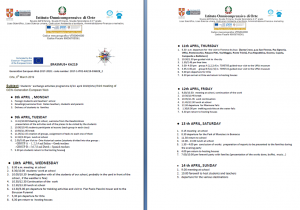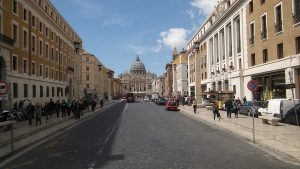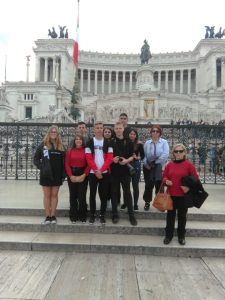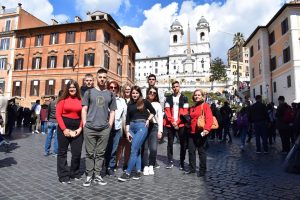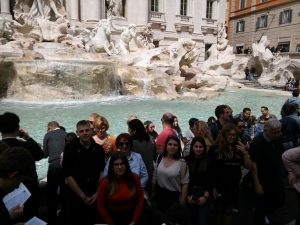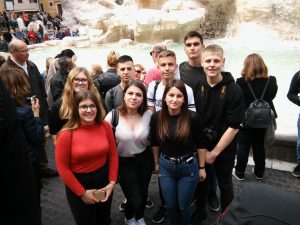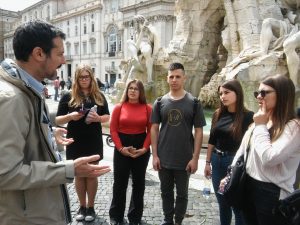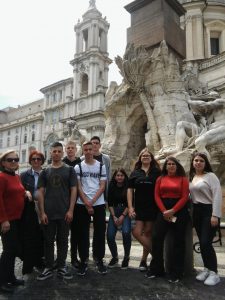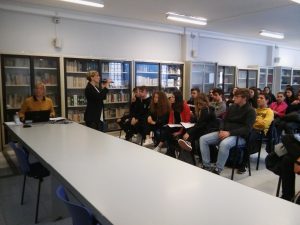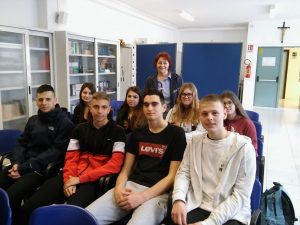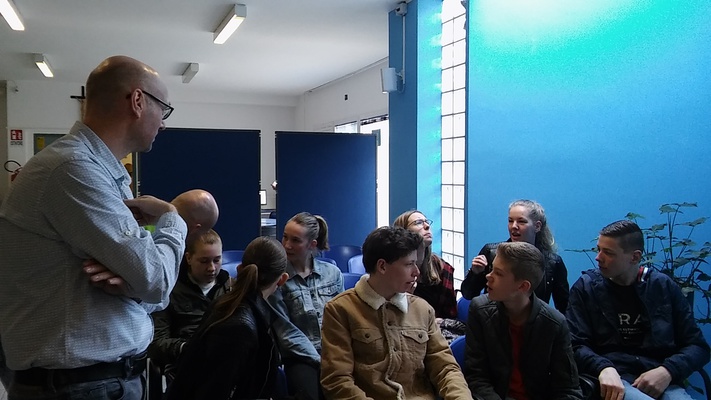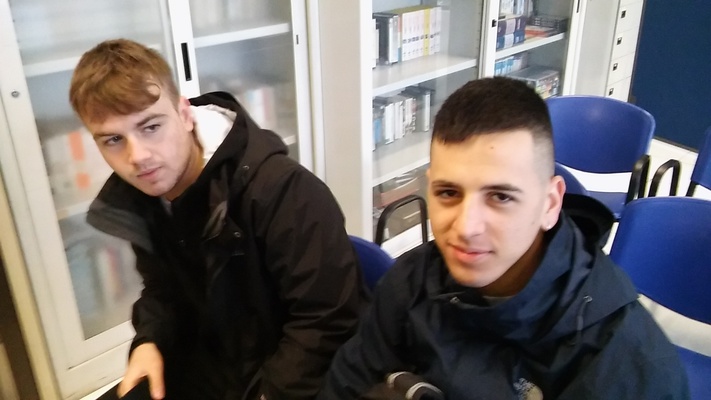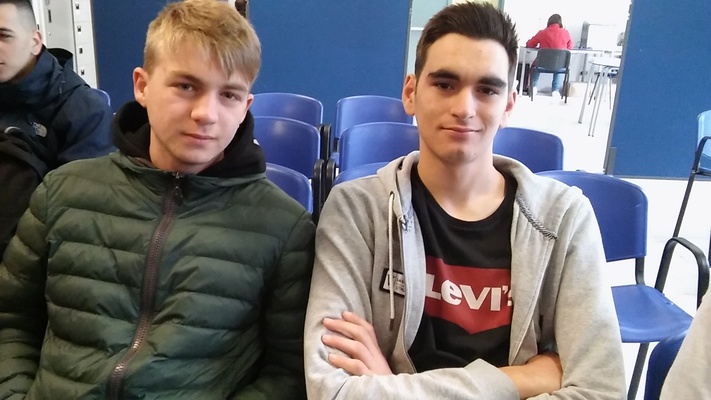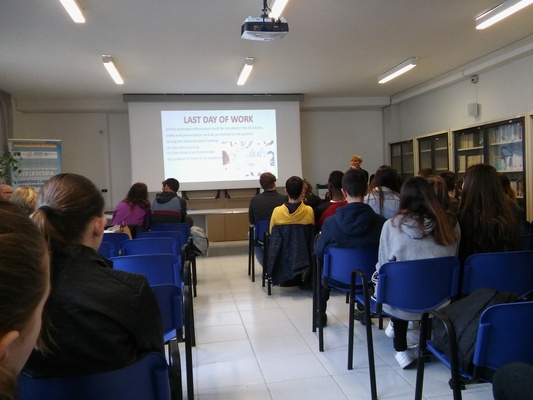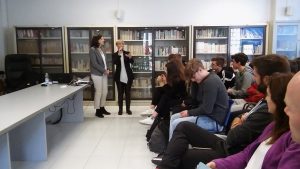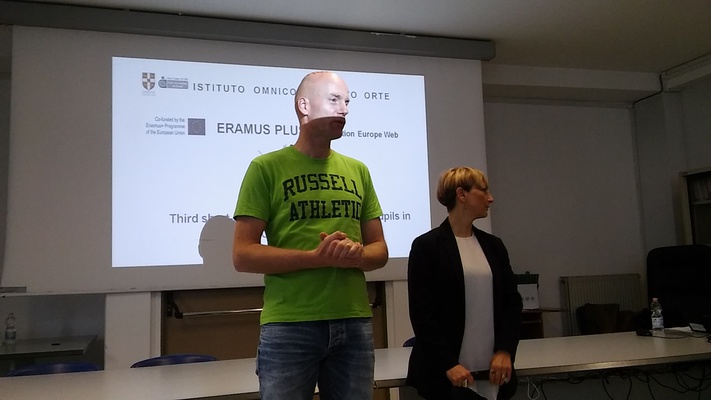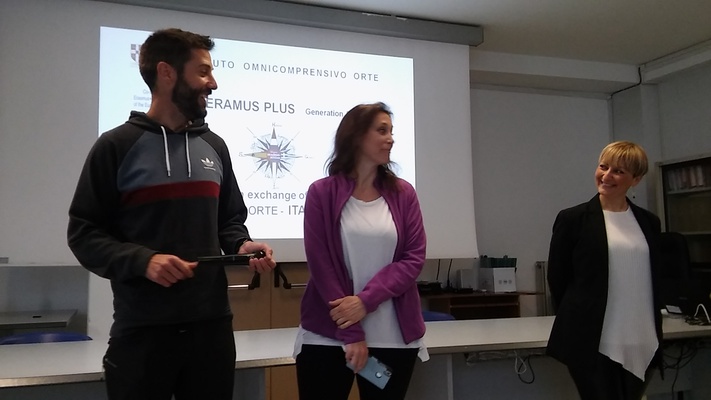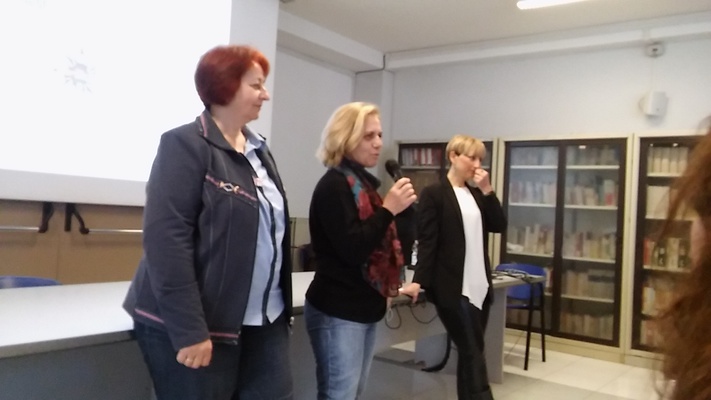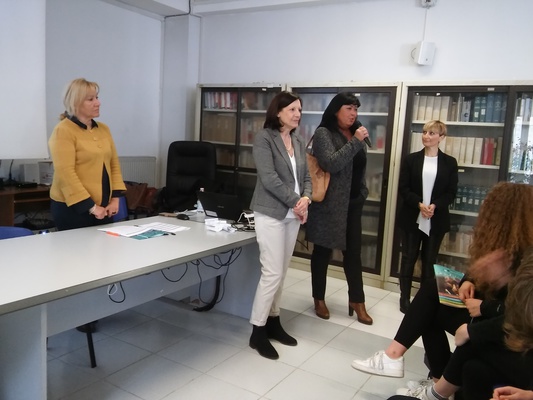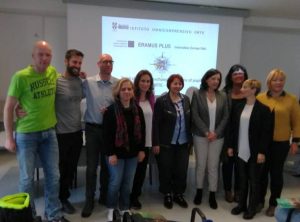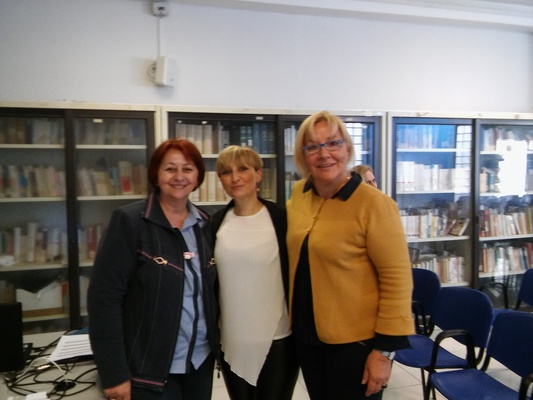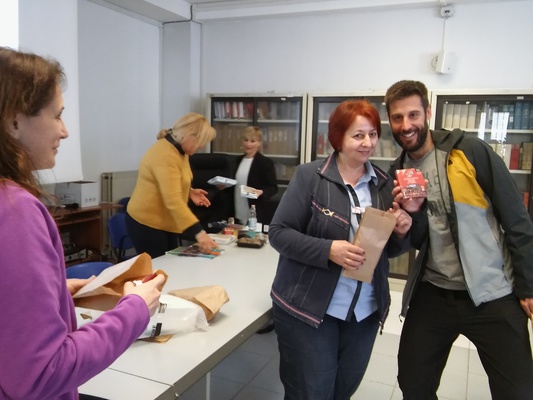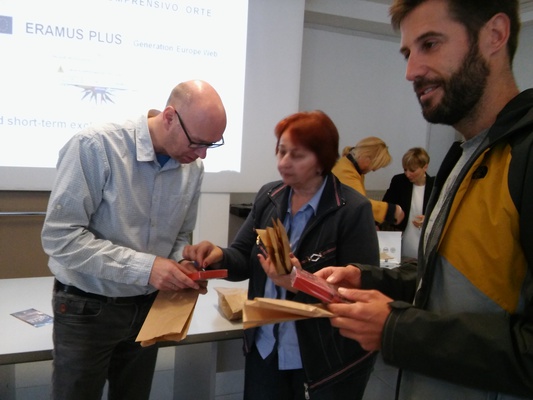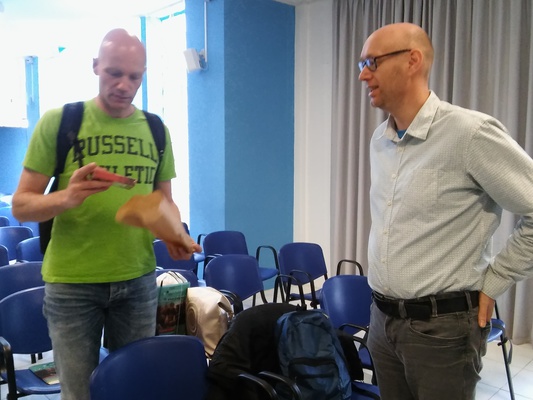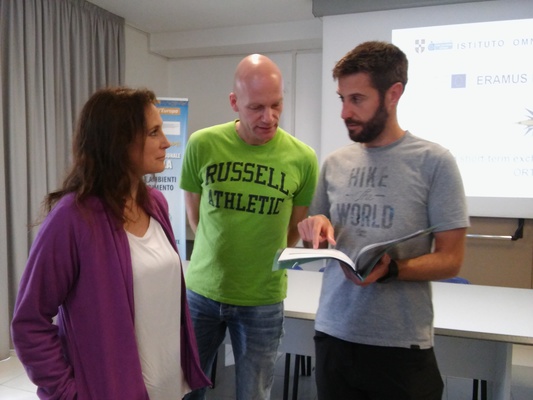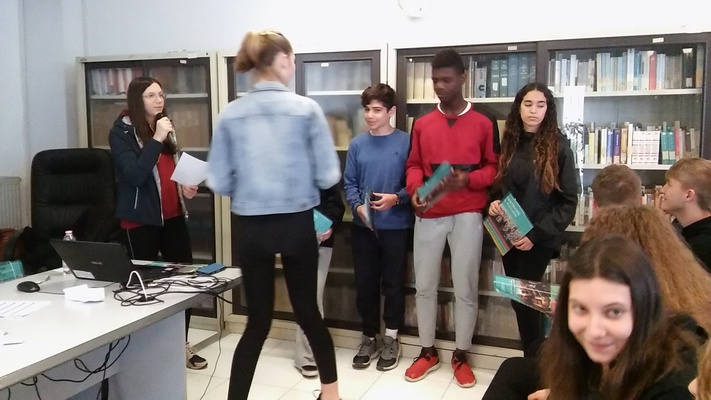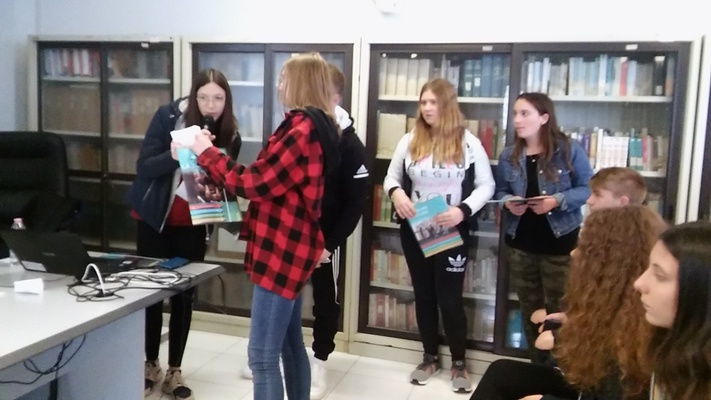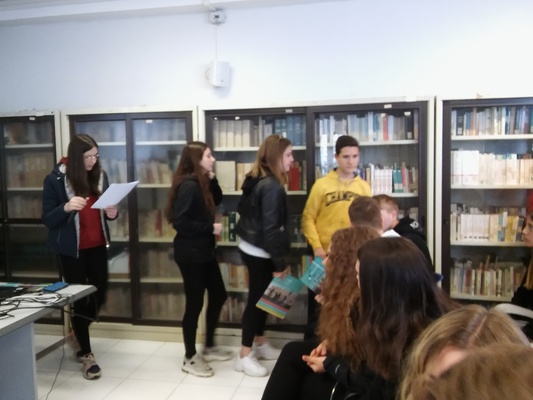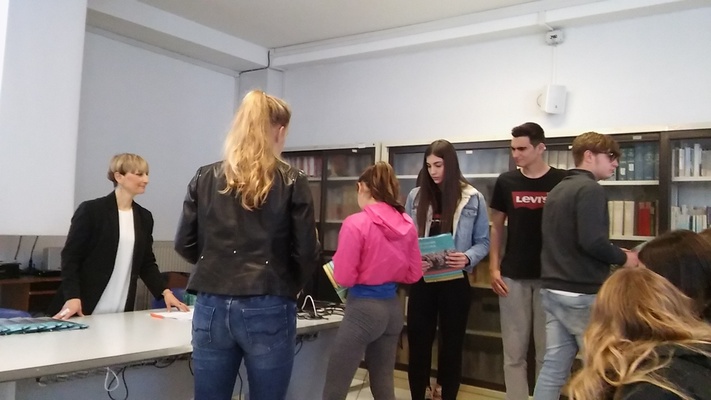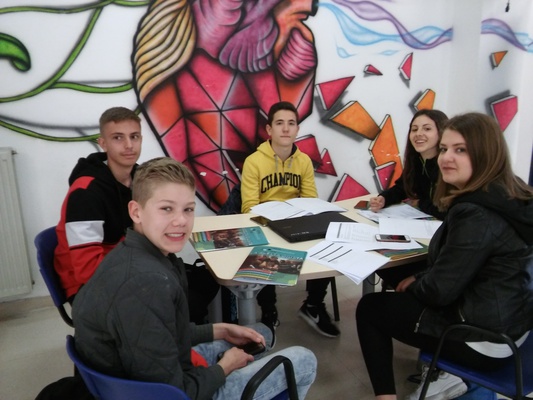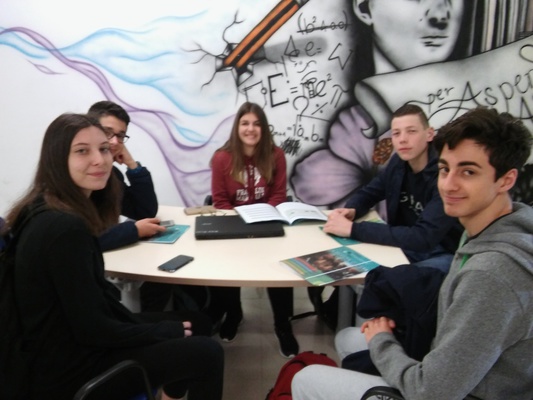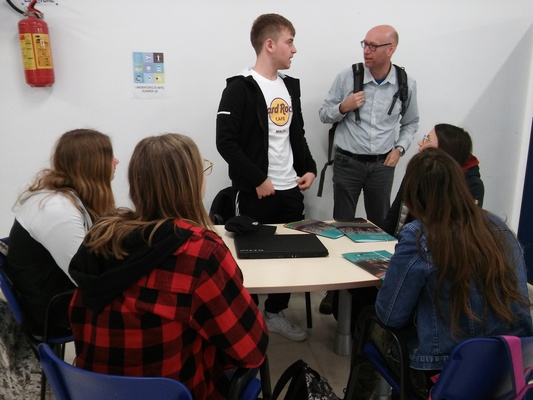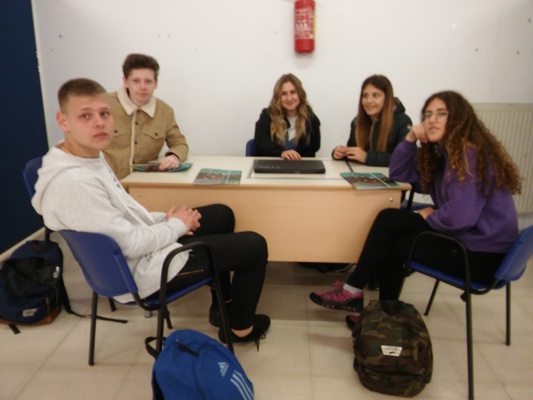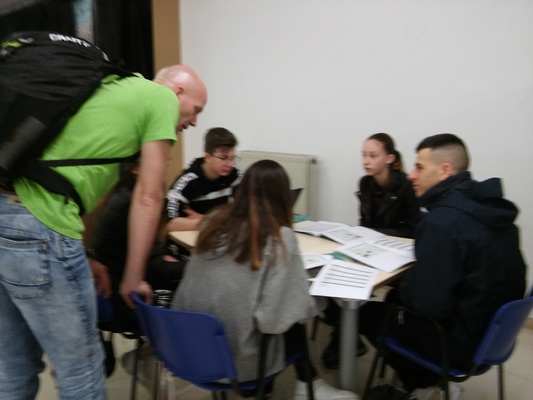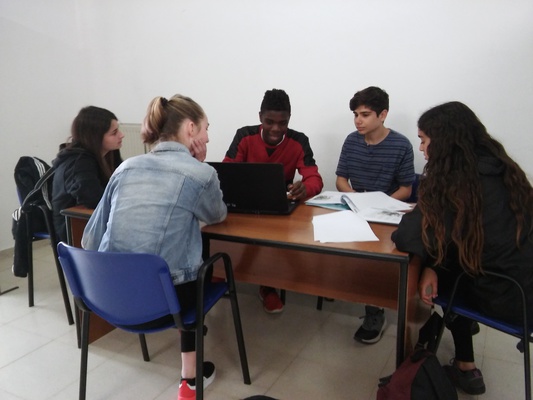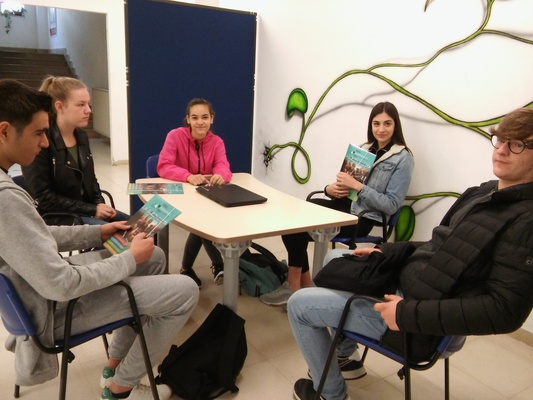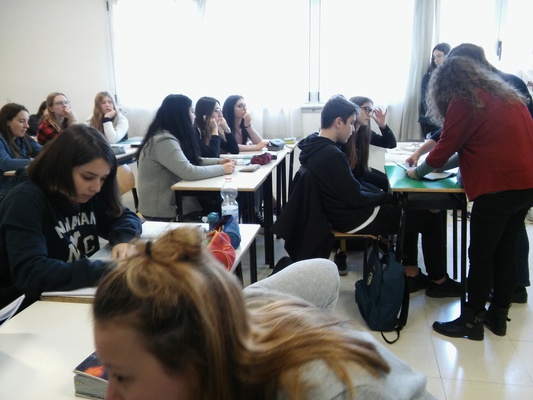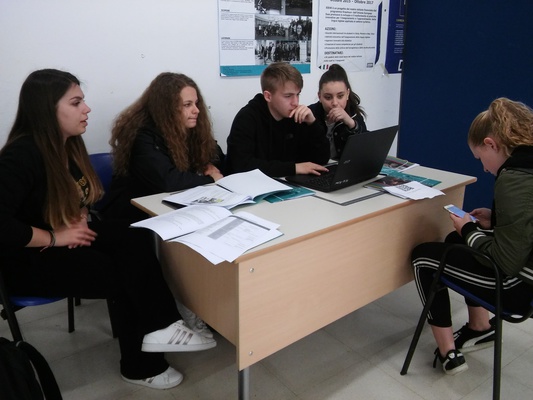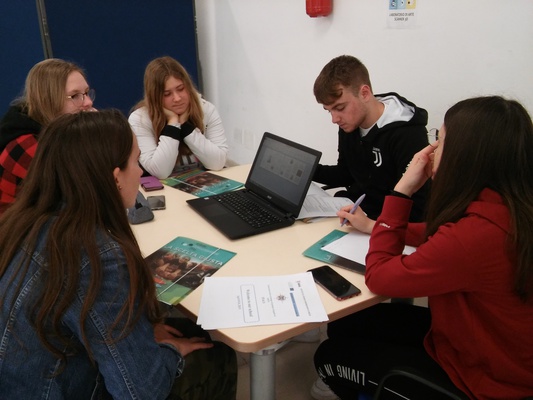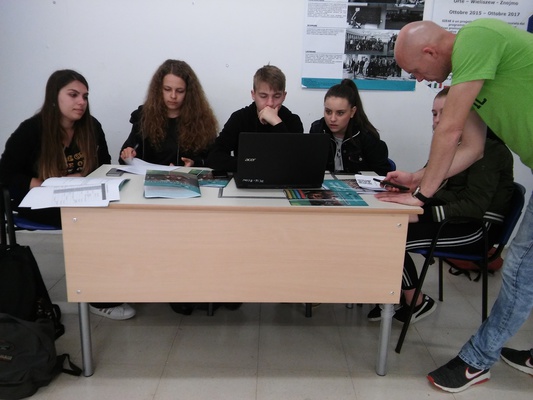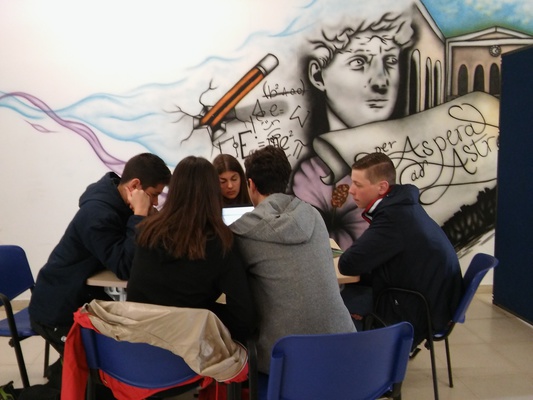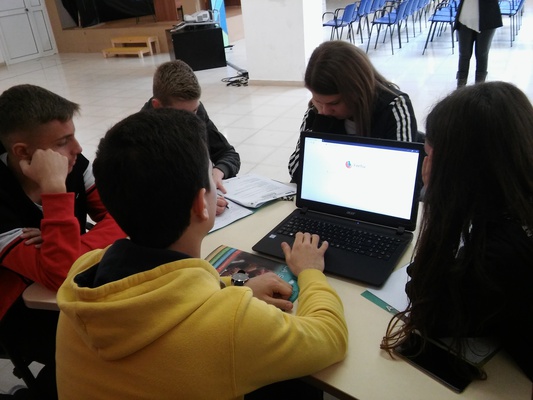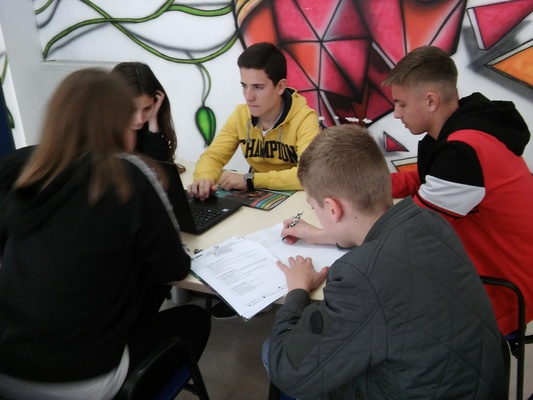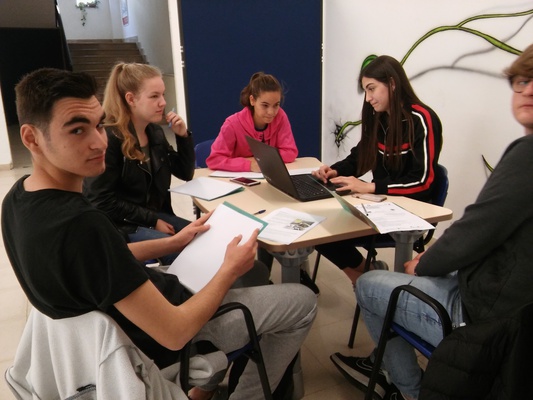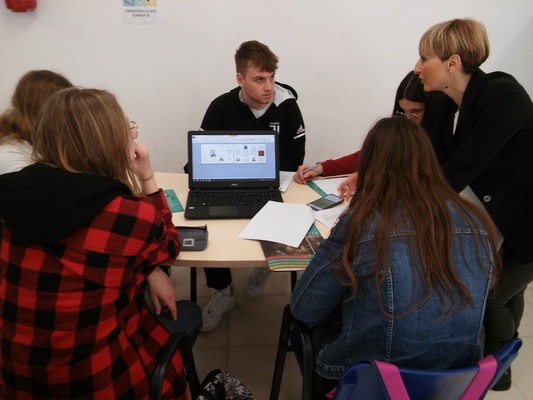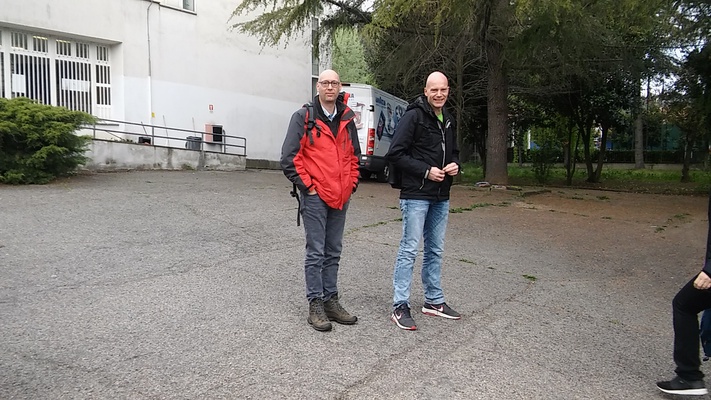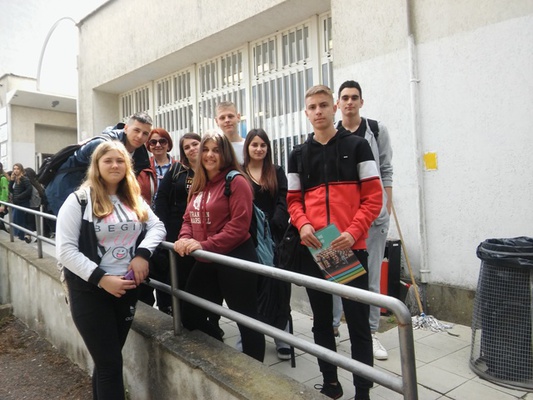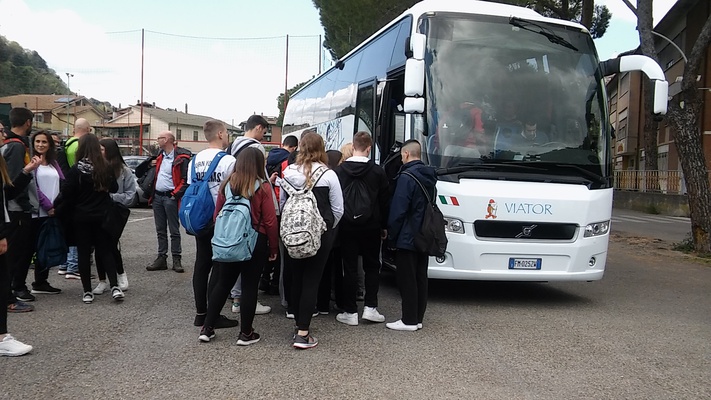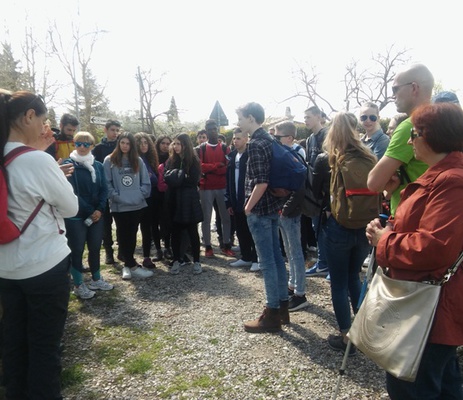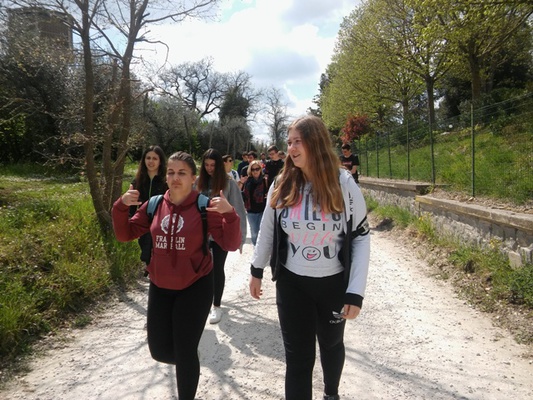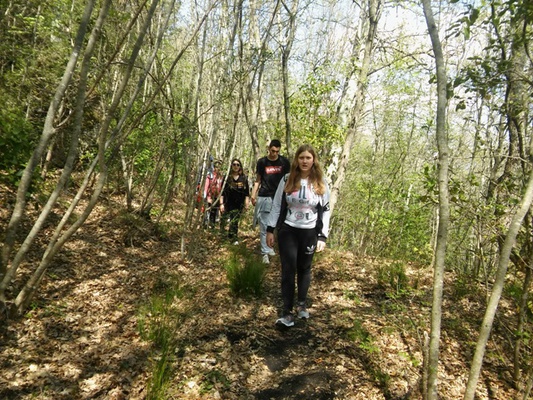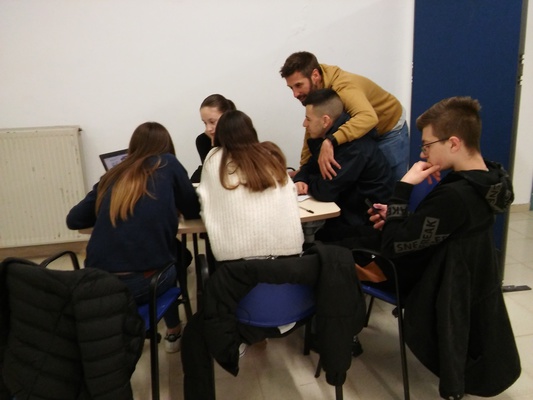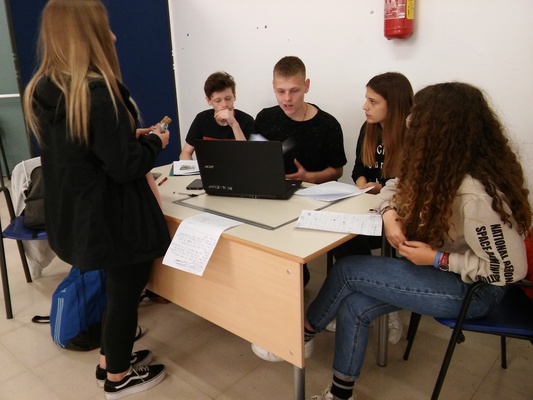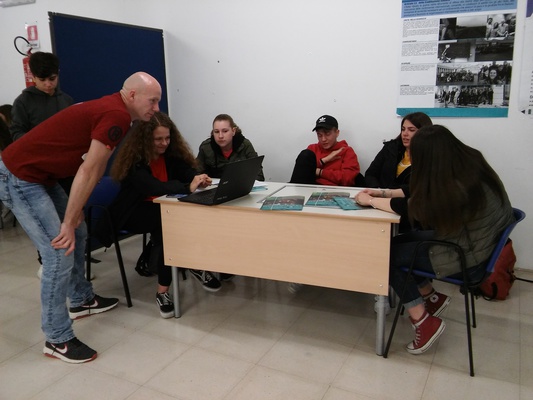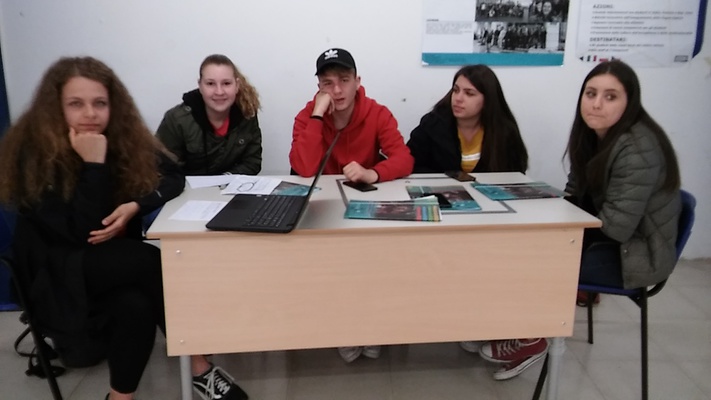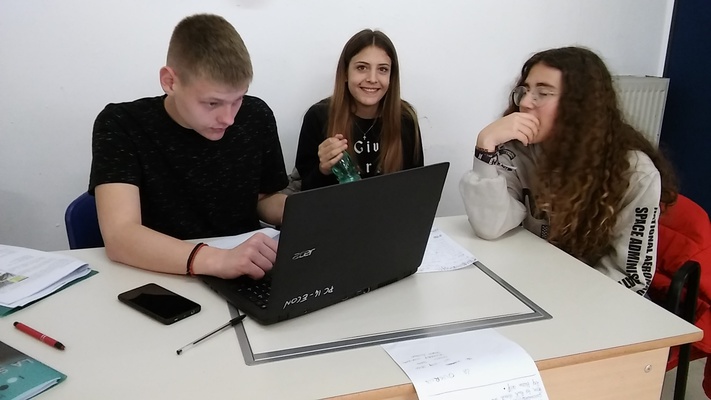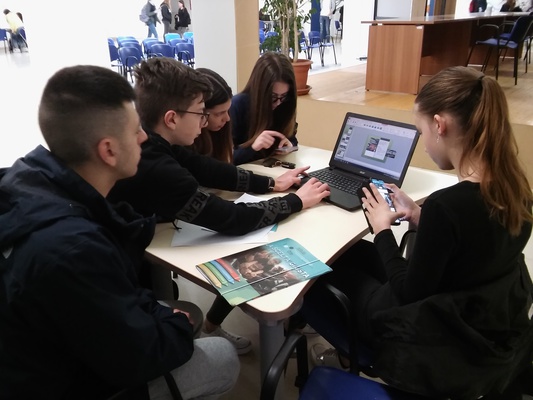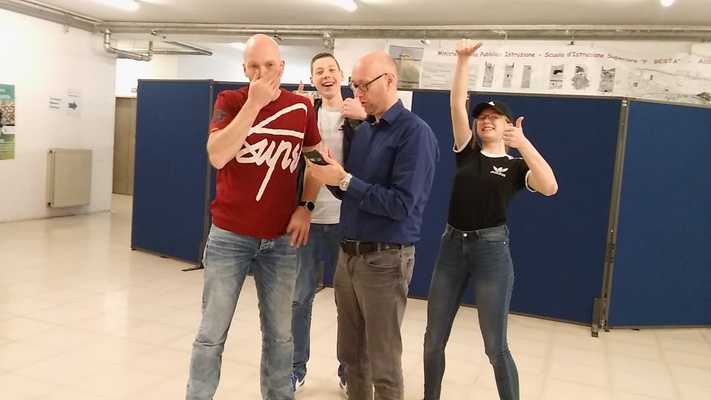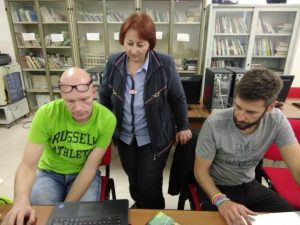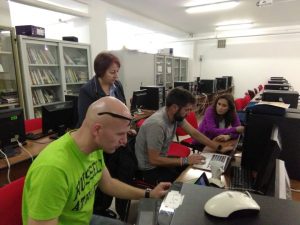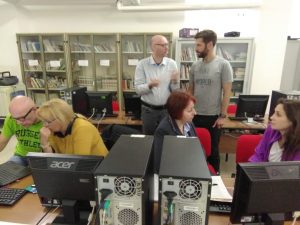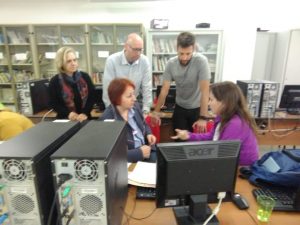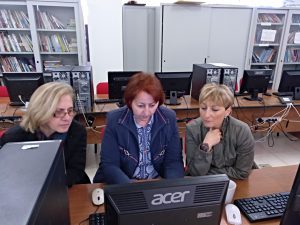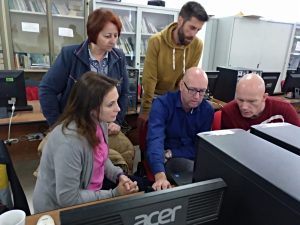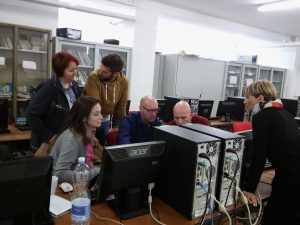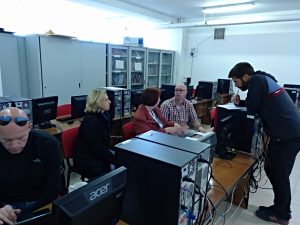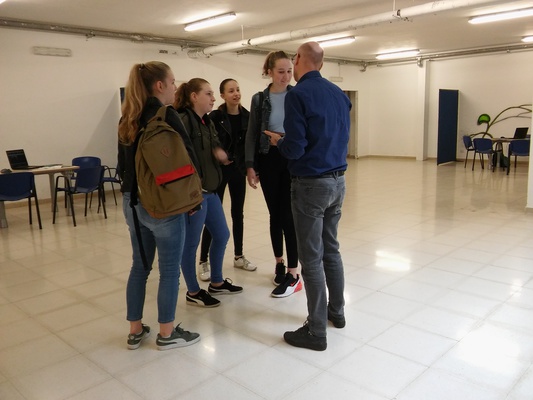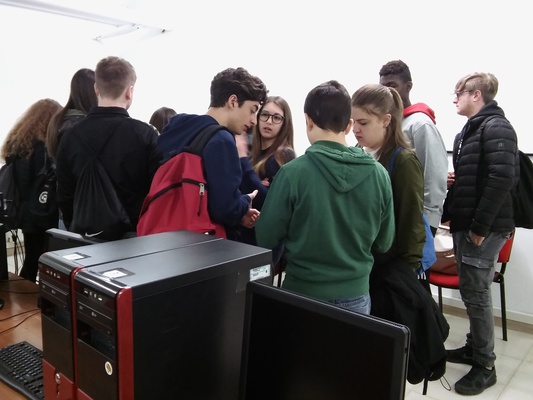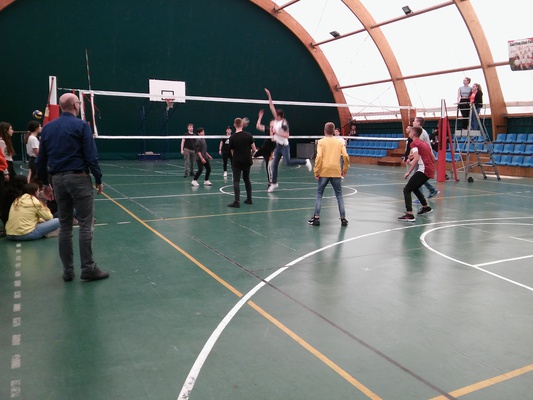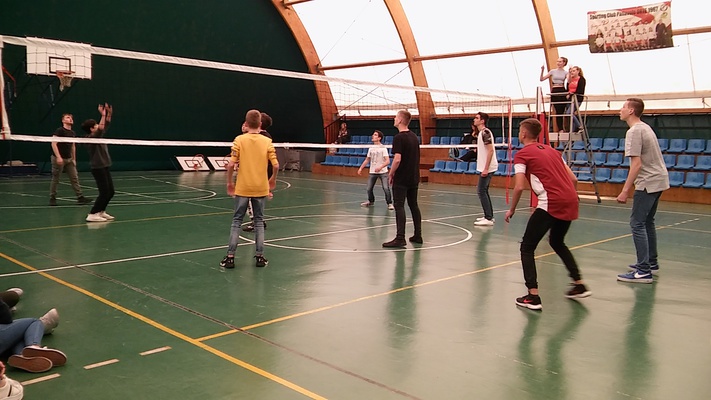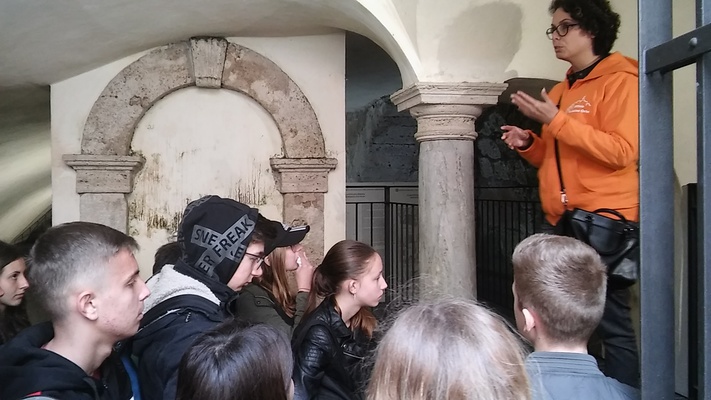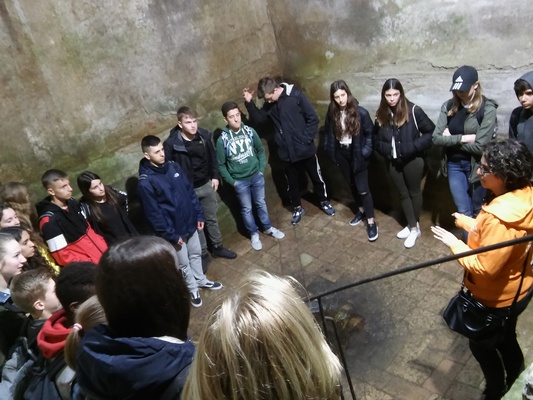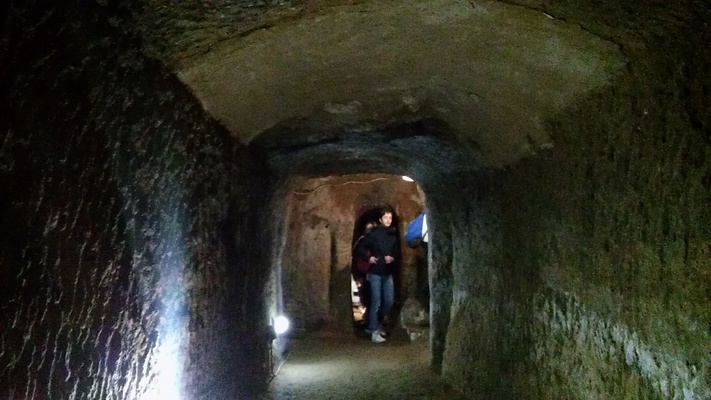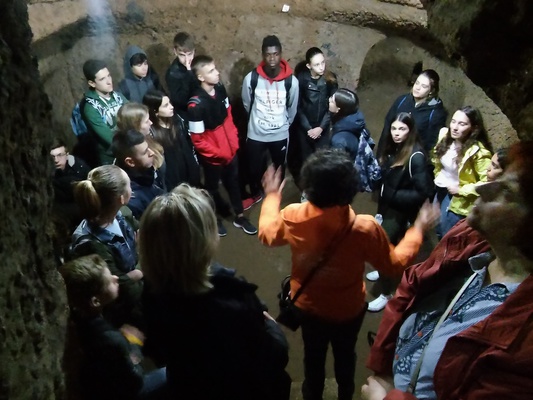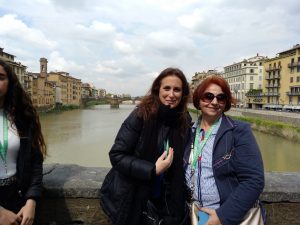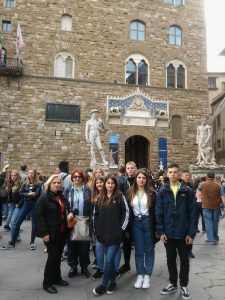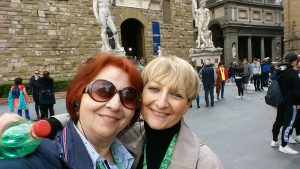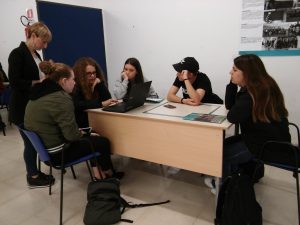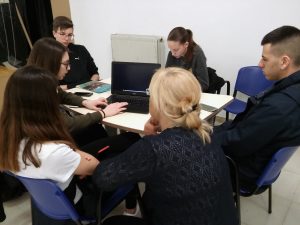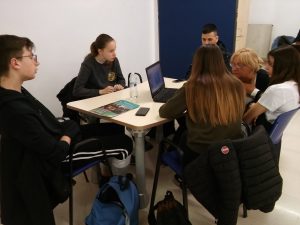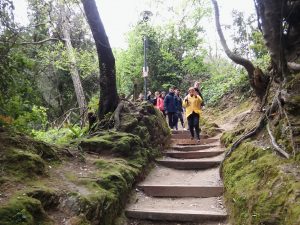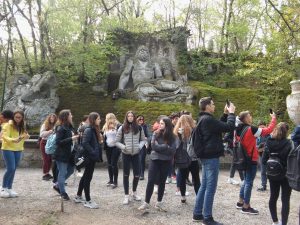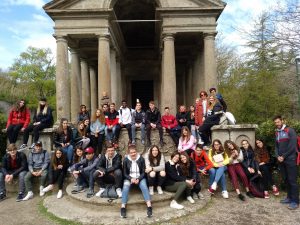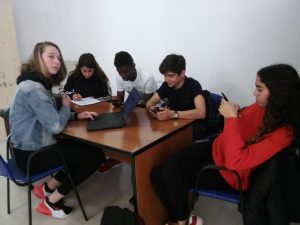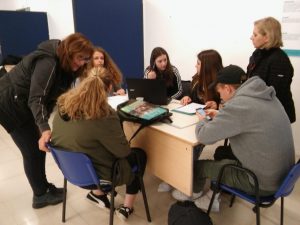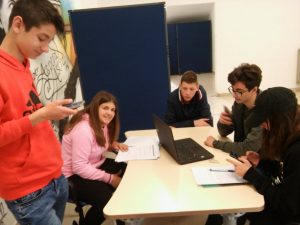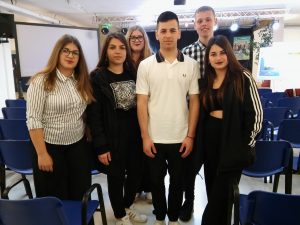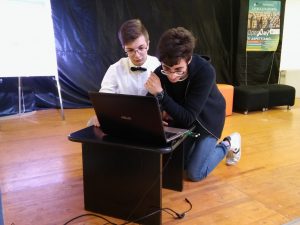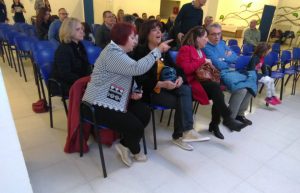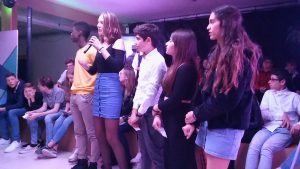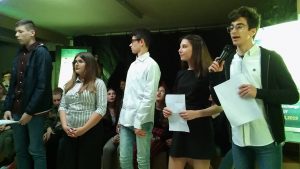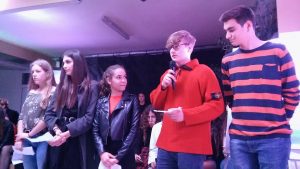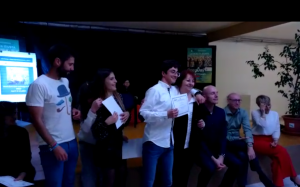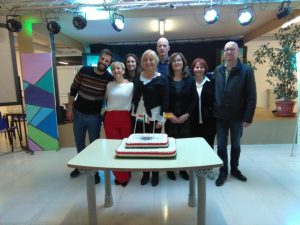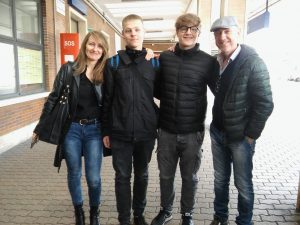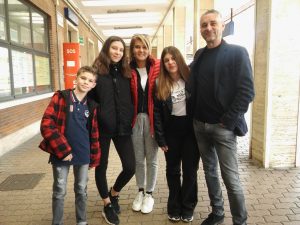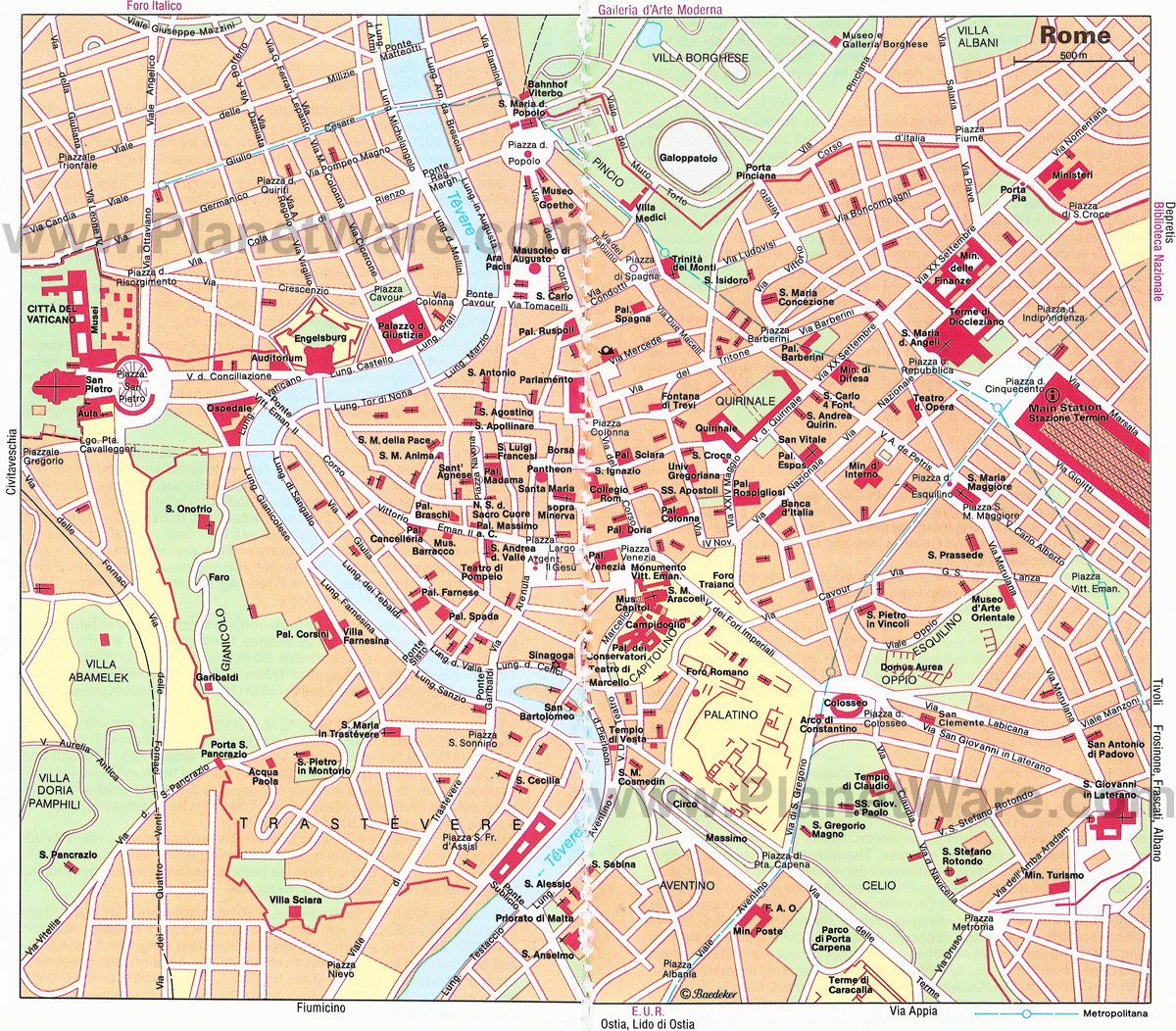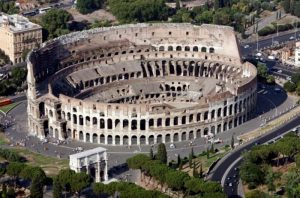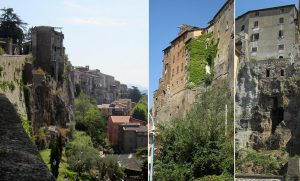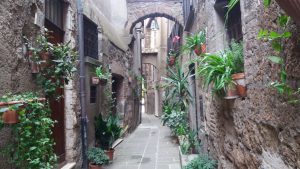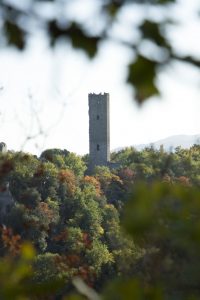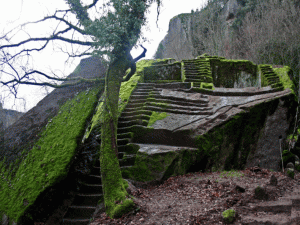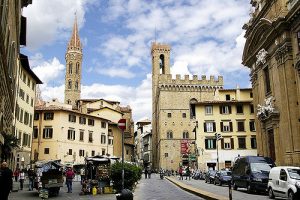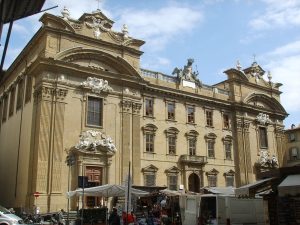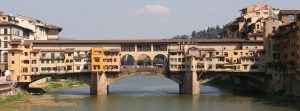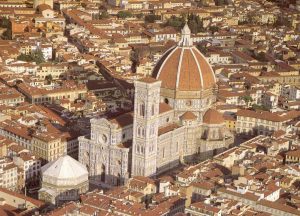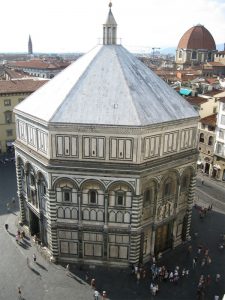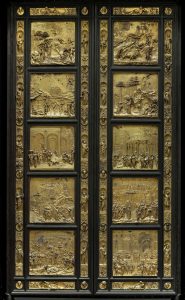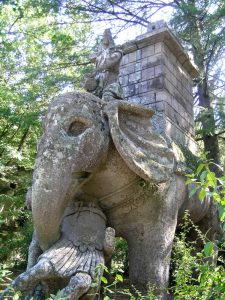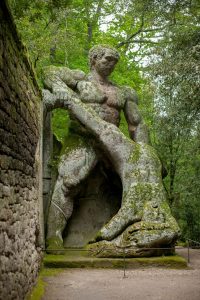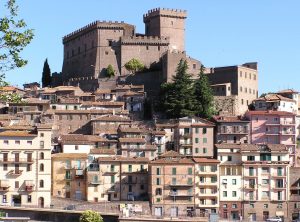Official invitation for the third meeting with students
Orte activity program
ΠΡΟΣΚΛΗΣΗ – ΠΡΟΓΡΑΜΜΑ – ΒΕΒΑΙΩΣΗ
ΑΔΑ: 6Χ1Ν4653ΠΣ-2ΧΥ – «Μετακίνηση εκπαιδευτικών και μαθητών στα πλαίσια υλοποίησης του ευρωπαϊκού προγράμματος Erasmus+»
Before the meeting in Orte, Italy
EXCHANGE TRIP ITALY 8-14 April 2019
Guided tour to Rome
Meeting with the families in Orte
-
School Activities THE-DETAILED-ACTIVITIES-DAY-BY-DAY
2nd day at school – start project meeting
2nd day at school – the mixed groups
Geography lesson in Cambridge class
Working on the project activities
2nd day at school – Leaving school for trekking activities
3rd day at school – working on the project
Teachers’ collaboration
Break
Sport activities
Visit to Orte historical centre (students divided into due groups :
– GROUP A – 1, 2,3,4 and Italian – Greek teachers
– GROUP B – 5,6,7,8 and Dutch – Spanish teachers
Florence
5th day at school – working on the project
Marmore falls
Bomarzo
6th day at school – working on the project
Dinner with the hosting families
Presentation of the groups’ work to the parents
Final presentation of Group 1
https://www.facebook.com/GEWerasmus/videos/1104215869969622/
Final presentation of Group 2
https://www.facebook.com/GEWerasmus/videos/2484265621846212/
Final presentation of Group 3
https://www.facebook.com/GEWerasmus/videos/396393254582055/
Final presentation of Group 4
https://www.facebook.com/GEWerasmus/videos/957319894641833/
Final presentation of Group 5
https://www.facebook.com/GEWerasmus/videos/2421105814815619/
Final presentation of Group 6
https://www.facebook.com/GEWerasmus/videos/2500847043518397/
Final presentation of Group 7
https://www.facebook.com/GEWerasmus/videos/429503171298739/
Final presentation of Group 8
https://www.facebook.com/GEWerasmus/videos/499928817264099/
Certificates of participation
With the host families
Departure of the delegations
FINAL EVALUATION QUESTIONNAIRE
EVALUATION by the Greek students
Group evaluation in Orte by the Greek students
Group evaluation in Orte by the Greek students Responses
Evaluation by the Dutch students
Δελτία Τύπου
Il progetto ERASMUS GEW è al 3° scambio culturale
Alfavita Στην Ιταλία μαθητές του 2ου ΓΕΛ Αλιβερίου
Evia Top Τρίτη διεθνική ανταλλαγή μαθητών του 2ου ΓΕΛ Αλιβερίου στην πόλη Orte της Ιταλίας 08-14 Απριλίου 2019
Evia Cosmos 2ο ΓΕΛ Αλιβερίου: Γύρισαν ενθουσιασμένοι οι μαθητές από την Ιταλία
Eviaportal Τρίτη διεθνική ανταλλαγή μαθητών του 2ου ΓΕΛ Αλιβερίου
Ο καιρός σε Ρώμη Weather Rome Weather Orte Weather Florence
Monday/Rome
Rome Sightseeing Ρώμη: Αξιοθέατα
Piazza di Spagna
Τρινιτά ντέι Μόντι
Κολοσσαίο
Οι Αγορές του ΤραΪανού και το Μουσείο των Αυτοκρατορικών Αγορών
Πιάτσα Ναβόνα (Piazza Navona)
Program of visits
Map of region of Lazio
Tuesday/Orte historical centre
Orte is a town, comune (municipality), former Catholic bishopric and Latin titular see in the province of Viterbo, in the central Italian region Latium Lazio, located about 60 kilometres (37 mi) north of Rome and about 24 kilometres (15 mi) east of Viterbo. It is situated in the Tiber valley on a high tuff cliff, encircled to North and East from a handle of the Tevere river. It is an important road and rail hub.
The aqueduct of Orte
Santa Maria Assunta is the main Roman Catholic church of Orte, located in front of the Piazza della Liberta of the town, in the province of Viterbo, region of Lazio, Italy. It is one of three co-cathedrals of the diocese of Civita Castellana, which since 1991 encompases the former territories of the dioceses of Orte, Gallese, Nepi, and Sutri, each of which has a co-cathedral church.
Wednesday/Pier Paolo Pasolini tower also named The tower of Chia
Ο Πύργος της Chia, εκεί που έζησε τα τελευταία του χρόνια ο Παζολίνι
Pier Paolo Pasolini tower or The tower of Chia, was once the writing studio of Pier Paolo Pasolini. In 1964, the writer and director was shooting his most famous film “The Gospel according to Matthew” when he saw this medieval tower, and he fell in love with it, bought it in 1970 and restored it. It was Pasolini’s last home, where he was writing the unfinished novel ‘Oil” before being killed in 1975.
The lonely silhouette of the Tower of Chia (Torre di Chia) rises above the scenic woods and waterfalls of Fosso Castello in the province of Viterbo, the land of the ancient Etruscans. It is here that the Italian director, poet, and writer Pier Paolo Pasolini spent the final years of his life, and filmed the key scenes of his most famous film, “The Gospel According to Matthew.”
You can’t enter the tower (it’s private property), but you can walk around its walls while you look for the cache. The nearby woods are nice, too.
Η πυραμίδα του Bomarzo (VT) (Ιταλία)
In 2008, a local resident named Salvatore Fosci rediscovered a monumental Etruscan pyramid-shaped altar, just a short distance from the famous Parco dei Mostri (Park of Monsters) in Bomarzo.
The enormous peperino rock was hidden by vegetation on the slopes of a deep canyon and was only discovered for the first time in the 1990s, by two local archaeologists.
The pyramid is believed to be an altar dating back to the 7th or 6th centuries BC, used by the Etruscan haruspices, soothsayers who practiced divination by inspecting the entrails of sacrificed animals. This art of divination was a key element of the Etrusca Disciplina(Etruscan religious scriptures), which had a significant influence on Roman culture.
The altar is positioned toward the northwest, facing the direction of the Etruscan underworld gods (Di inferi). In the heyday of the Etruscan civilization, it must have represented a very important sacred site, though very little is known about it.
Steps and gutters (possibly to facilitate the flow of blood of sacrificed animals) were carved in the altar, which is also known by the name of Sasso del Predicatore (The Preacher’s Stone). The steps are steep and holes carved along either side of the steps and on the intermediate levels may have once supported wooden posts and supports.
The area surrounding the pyramid is a treasure trove of Etruscan inscriptions, tombs, medieval ruins, and a mysterious tower associated with the Italian writer and director Pier Paolo Pasolini. Hiking trails connect all of the sites within a four-hour hike.
Thursday/Florence
The 10 most important places in Florence
Τα Σημαντικότερα Αξιοθέατα στη Φλωρεντία
Santa Croce – “the Pantheon of Italian glory”
Piazza della Signoria is an L-shaped square in front of the Palazzo Vecchio in Florence, Italy. It was named after the Palazzo della Signoria, also called Palazzo Vecchio. It is the main point of the origin and history of the Florentine Republic and still maintains its reputation as the political focus of the city.[1] It is the meeting place of Florentines as well as the numerous tourists, located near Palazzo Vecchio and Piazza del Duomo and gateway to Uffizi Gallery.
Via Maggio, a historic street just minutes away from the Ponte Vecchio
Florence Cathedral, Duomo Cattedrale di Santa Maria del Fiore
Campanile di Giotto e Battistero di San Giovanni
The famous “Gates of Paradise” by Ghilberti
Friday/Marmore falls
The amazing Marmore falls are just 8 kilometers from Terni and can be reached by either of the two roads east of the city, one leading to the upper road, or “Superiore”, and the other that takes you to the lower road, or “Inferiore”. Cascata dell Marmore is in fact a man made water fall and at 541 feet is the highest in all of Europe. The falls were created by the Romans in 271 BC when they diverted the River Velino into the Nera to prevent flooding of local agricultural land. Further work was done when channels were dug in 1400 and 1785 with the intention of draining Riet’s plain without causing floods in Terni. The final step that created the spectacle as we know it today came about when Lago Piediluco was dammed in the 1930′s which allowed their use for hydroelectric power. The hydroelectric plant at the Marmore Falls is in fact the largest in all of Italy.
Saturday/The Monsters, also named the Park of Monsters in Bomarzo
Το «Πάρκο των Τεράτων» στην Ιταλία
Parco dei Mostri: Το πάρκο των τεράτων
A 16th-century horror show built in a lovely Italian garden.
Τhe Park of the Monsters, or “Parco dei Mostri,” in the Garden of Bomarzo was not meant to be pretty. Commissioned in 1552 by Prince Pier Francesco Orsini, it was an expression of grief designed to shock.
The Prince, also known as Vicino, had just been through a brutal war, had his friend killed, been held for ransom for years, and come home only to have his beloved wife die. Racked with grief, the Prince wanted to create a shocking “Villa of Wonders” and hired architect Pirro Ligorio to help him do so. Ligorio was a widely respected architect and artist and had previously completed the Cathedral of Saint Peter in Rome after the death of Michelangelo, as well as the Villa d’ Este in Tivoli. This was to be an unusual, but interesting job for him.
The park is filled with bizarre and fascinating sculptures for which only the accompanying inscriptions provide any explanation. Among the pieces are a war elephant, a monstrous fish-head, a giant tearing another giant in half, and a house built on a tilt to disorient the viewer. Perhaps the most frightening piece in the garden is an enormous head, mouth opened wide in a scream. The accompanying inscription reads “all reason departs.”
Built during the Italian Renaissance, the garden layout bore little resemblance to the symmetry of other Renaissance gardens, and the art was made in a rough “Mannerist” style, a sort of 16th-century version of Surrealism. It makes sense, then, that the Surrealists loved it.
Salvador Dalí visited the park and loved it. He was so inspired, he shot a short film there, and the sculptures inspired his 1946 painting The Temptation of Saint Anthony. Jean Cocteau was also a fan of the park. Other artists followed, and a novel, libretto, and opera have all been based on the park.
While there is no way of truly knowing how the Prince felt about the park, the final addition indicates that perhaps he was getting over his melancholy. Built 20 years after the park was begun, it is not a monster but a temple, built to honor his second wife.
When you visit the park, be sure to enter the giant screaming mouth (known as “the mouth of hell”), inside which, on the tongue, stands a picnic table and enough seating for a small group to have lunch.


